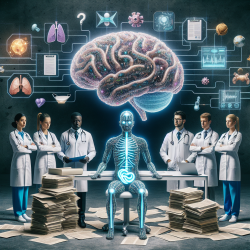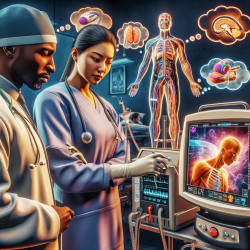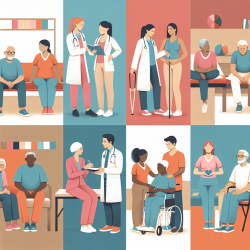Unleashing the Power of Large Language Models in Gastroenterology
In the fast-paced world of healthcare, practitioners are constantly seeking innovative ways to enhance patient care, streamline clinical workflows, and stay abreast of medical advancements. The emergence of Large Language Models (LLMs), like ChatGPT, has opened new avenues for achieving these goals. The recent research article, "Large language models: a primer and gastroenterology applications," delves into the potential of LLMs in transforming gastroenterology practice, education, and research.
Understanding Large Language Models
LLMs are a subset of artificial intelligence (AI) that utilize deep learning techniques to process and generate human-like text. These models are trained on vast datasets, enabling them to perform a wide range of tasks, from language translation to complex reasoning. In gastroenterology, LLMs can automate repetitive tasks, enhance clinical decision-making, and provide personalized patient education.
Clinical Applications of LLMs
LLMs have the potential to revolutionize clinical practice by:
- Automating Documentation: LLMs can assist in generating concise and accurate clinical documentation, reducing the burden on healthcare providers and improving patient record accuracy.
- Enhancing Decision Support: By analyzing the latest research and guidelines, LLMs can provide evidence-based recommendations, aiding clinicians in making informed decisions.
- Personalized Patient Education: LLMs can generate tailored educational materials based on a patient's condition, language, and literacy level, improving patient understanding and adherence to treatment plans.
Educational and Research Opportunities
Beyond clinical applications, LLMs offer significant potential in medical education and research:
- Customized Learning: LLMs can create personalized learning materials for clinicians, helping them stay updated with the latest advancements in gastroenterology.
- Research Facilitation: LLMs can automate data extraction and analysis, uncovering trends and patterns that inform new research directions and improve patient care.
Challenges and Considerations
While the potential of LLMs is vast, practitioners must approach their implementation with caution. Understanding the limitations, such as potential biases and the need for human oversight, is crucial for safe and effective use. Ongoing research and collaboration between clinicians and AI developers are essential to address these challenges and optimize LLM capabilities.
Conclusion
The integration of LLMs in gastroenterology holds immense promise for enhancing patient care, streamlining clinical workflows, and advancing medical education and research. As practitioners, embracing this technology and actively participating in its development can lead to significant improvements in healthcare delivery. To explore the detailed findings and recommendations from the original research, please follow this link: Large language models: a primer and gastroenterology applications.










